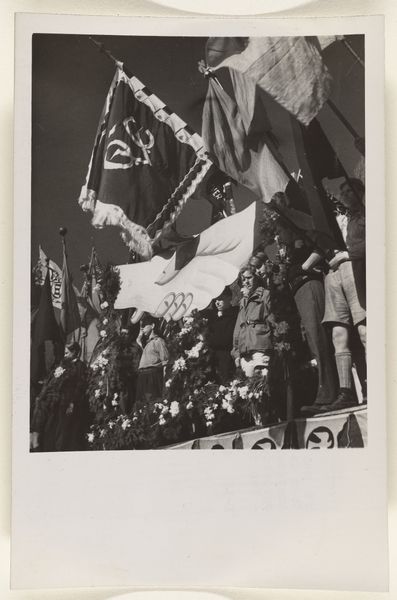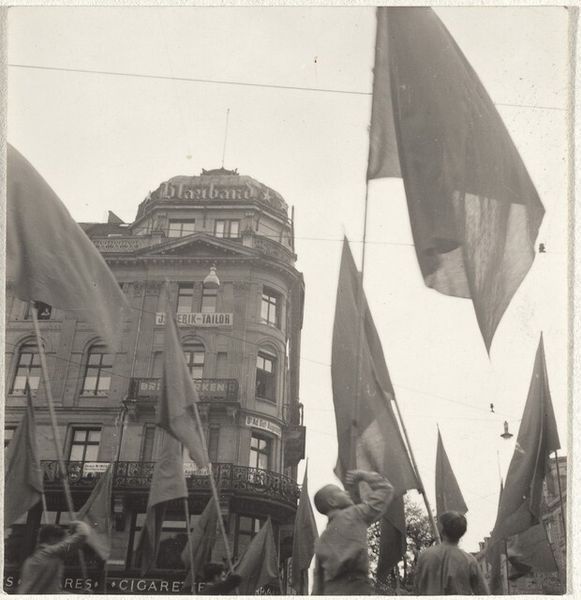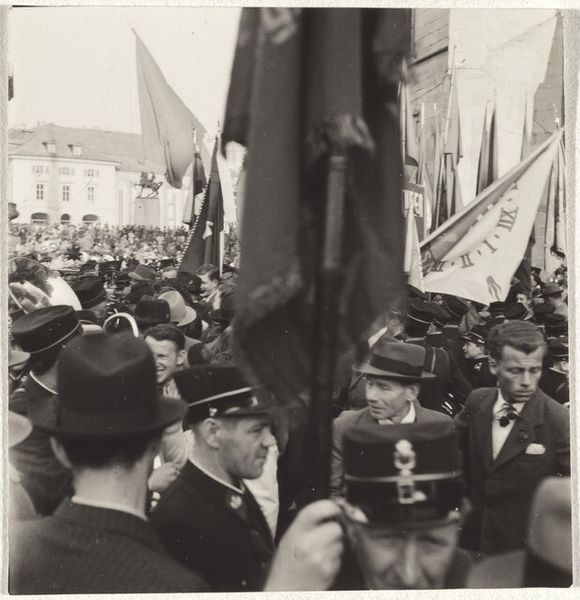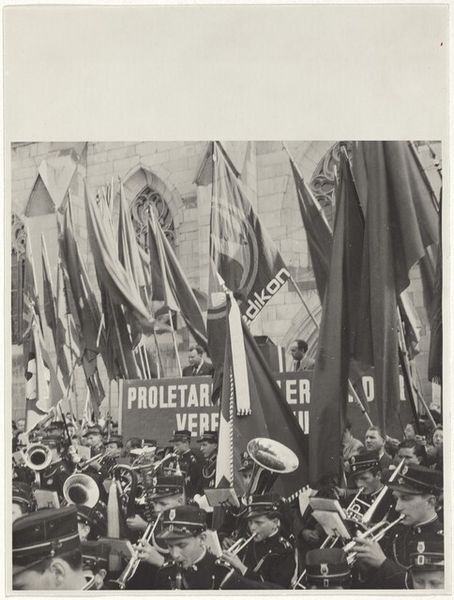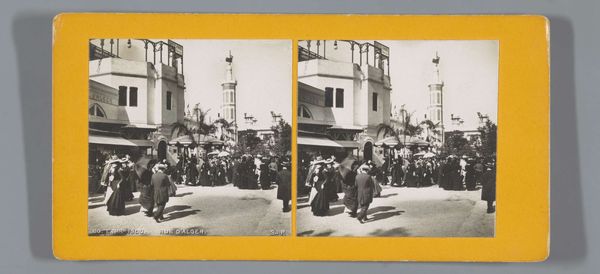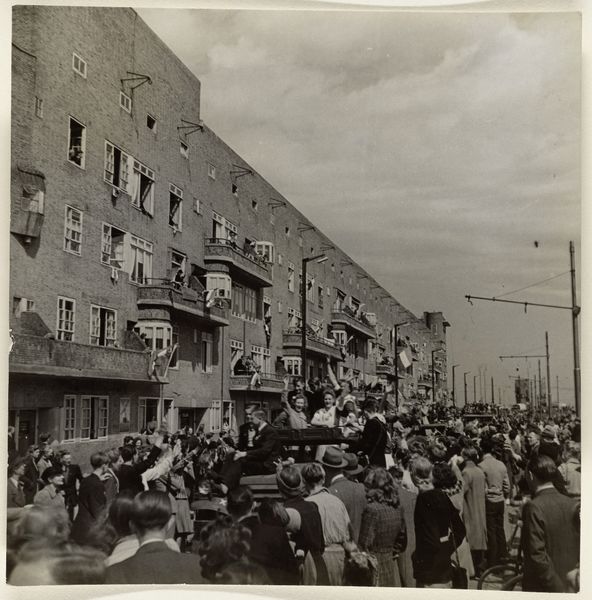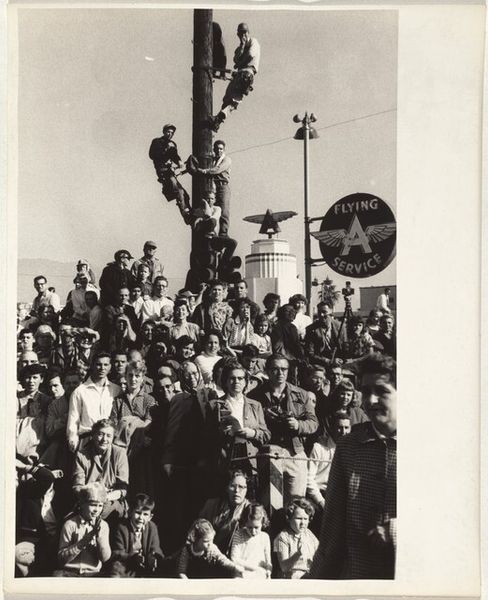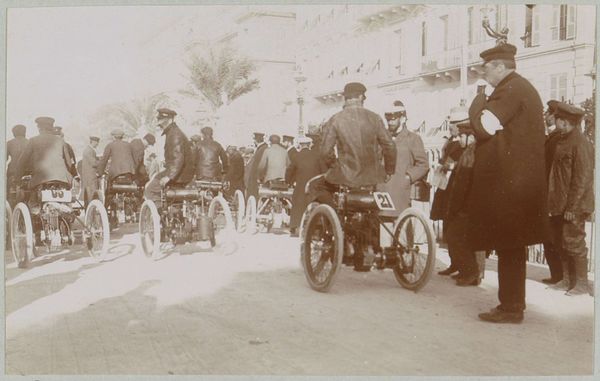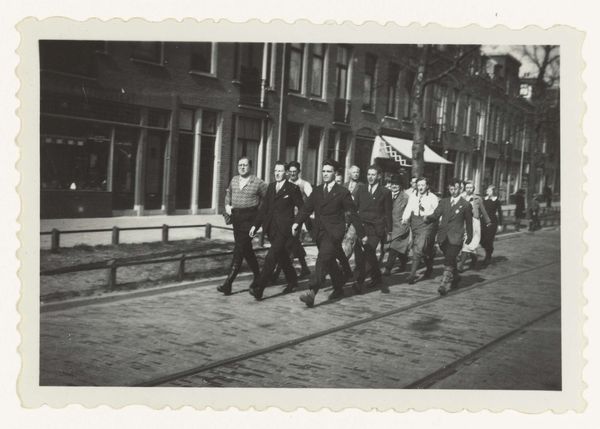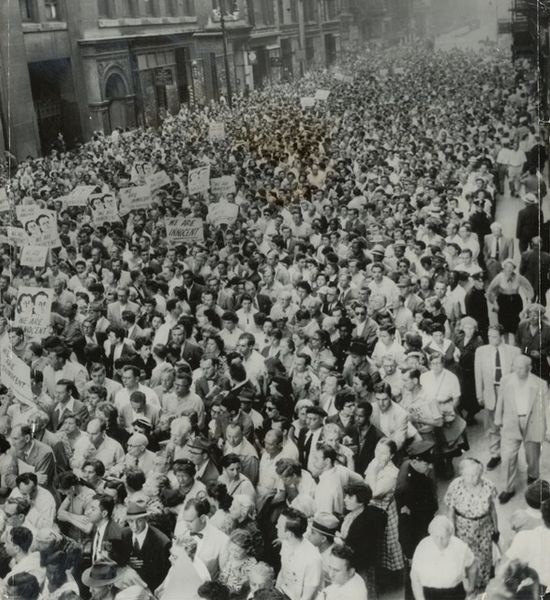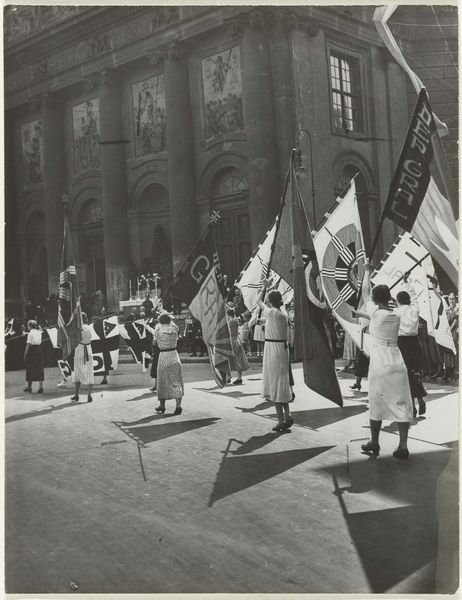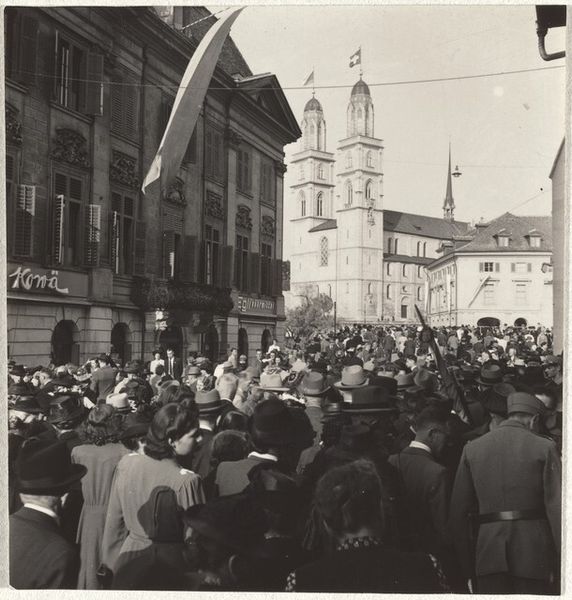
photography, gelatin-silver-print
#
film photography
#
street-photography
#
photography
#
culture event photography
#
cultural celebration
#
gelatin-silver-print
#
monochrome photography
#
celebration photography
#
history-painting
#
monochrome
Dimensions: sheet (trimmed to image): 23.7 x 17.8 cm (9 5/16 x 7 in.)
Copyright: National Gallery of Art: CC0 1.0
Editor: Here we have Robert Frank’s gelatin silver print, "Armistice Parade, Geneva," from 1945. It captures a street scene filled with people celebrating. I’m struck by the texture in the print and how it lends a gritty feel to the celebratory mood. What details stand out to you? Curator: Immediately, my eye goes to the photographic materials and process. Gelatin silver prints allowed for mass production. In that sense, this image isn’t about individual artistic expression, but about capturing a shared social moment for broad consumption. Editor: Interesting. So you’re thinking about how this celebratory moment was, in a way, manufactured for a wider audience? Curator: Precisely. Consider the historical context. It was 1945. People yearned for an end to conflict and austerity, yet photographic materials were rationed or directed for military ends. Capturing this event, and the materials used, reflects an opening, an access that also meant a consumerist access to the image of peace. Editor: I didn't think about the accessibility of photography back then. Curator: Look also at how Frank, while documenting a seemingly joyful occasion, offers subtle cues about the construction of national narratives. Flags and carefully organized marchers – aren't those, in themselves, produced and regulated materials? Editor: So, even the flags represent access to resources after years of scarcity, but also the way those resources build national pride? Curator: Yes. Frank implicates himself, and the viewer, within a network of materials and manufacture designed to express these values. This understanding moves us beyond simply looking at the picture towards looking at how it was made, why, and for whom. Editor: I've never considered an image this way. This photograph becomes much more than just a scene. It’s about what its existence represents within a specific economic climate. Curator: Precisely! Examining the means of production opens doors to understanding larger cultural narratives.
Comments
No comments
Be the first to comment and join the conversation on the ultimate creative platform.
